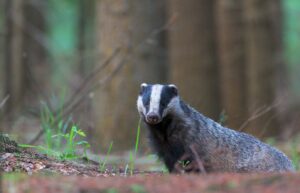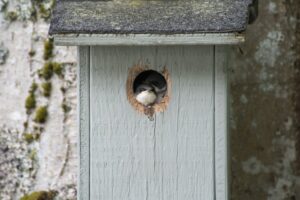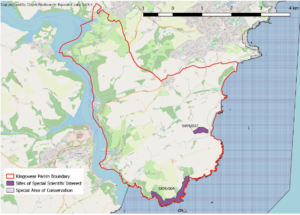Ideally we need to protect existing wildlife habitats from damage, destruction and disturbance. This page aims to give you an overview of legislation and policy as well as headline information on relevant issues such as the planning system and information on how to prevent impacts e.g. from lighting and invasive species.
Legislation and policy
Getting a good understanding of how our wildlife is protected through legislation and policy is important and yet confusing. We have started to compile some headline information to help. Again these pages are a work in progress so please so let us know what can be improved to make them more useful and what is missing – we intend to ‘Devonise’ this information over the next few months…
An overview of wildlife legislation can be found on the Wildlife Trusts website and at Naturenet.
Species
Protected Species
The primary mechanisms through which species are protected in Britain are The Wildlife & Countryside Act 1981 and Habitat Regulations.
Different species groups (e.g birds or plants) are categorised into different ‘schedules’ of the Wildlife & Countryside Act which afford differing levels of protection. For example, our rarest breeding bird species are listed on Schedule 1 and receive greater protection during the nesting season. In Devon examples of Schedule 1 birds are cirl buntings, goshawks, kingfisher and Dartford warbler.
Priority Species and Devon Special Species
A list of Priority Species for conservation action was drawn up in 2007 for the UK (these species are sometimes referred to as Section 41 species as they also form the statutory list of priority species required under Section 41 of the Natural Environment and Rural Communities Act 2006). Note that the majority of these species are not legally protected.
As the national list is in need of updating Devon partners have produced a list of 1600 Devon Priority Species and information is held on the DBRC website. A short list of 96 species for which Devon has a particular responsibility has been produced – these are known as Devon’s Special Species.
Habitats
Designations
Wildlife habitats can receive different levels of protection through designations at national and local level and designations can be statutory (= having legal protection) or non statutory (no legal protection).
Use the Devon Environment Viewer to explore the different site designations in Devon by clicking on the layer list icon in the top righthand corner of the screen.
-
Statutory sites
Special Areas of Conservation (SAC)
SACs are designated where they support internationally important habitats and/or species listed in the EC Habitats Directive.
Special Protection Areas (SPA)
SPAs are areas which have been identified as being of international importance for the breeding, feeding, wintering or the migration of rare and vulnerable species of birds found within European Union countries. They are designated under the European ‘Birds Directive 1979’. More information about SPAs can be found on the Natural England website.
Ramsar sites
The Ramsar Convention is an international agreement signed in Ramsar, Iran, in 1971, which provides for the conservation and good use of wetlands. The UK Government ratified the Convention and designated the first Ramsar sites in 1976.
Sites of Special Scientific Interest (SSSI)
SSSIs are designated under the Wildlife & Countryside Act 1981 where they support habitats and/or species of national importance. SSSIs represent our best sites for wildlife and geology.
National Nature Reserves (NNR)
NNRs are designated under section 35 of the Wildlife & Countryside Act 1981. They are owned by or managed through agreements with Natural England
Local Nature Reserves (LNR)
All district and county councils have powers to acquire, declare and manage LNRs. Town and parish councils can create LNRs if the district council has given them the power to do this. To qualify for LNR status, a site must be of importance for wildlife, geology, education or public enjoyment. LNRs must be controlled by the local authority through ownership, lease or agreement with the owner.
-
Non-statutory sites
County Wildlife Sites (CWS)
There are approximately 2,200 County Wildlife Sites (CWS) across Devon comprising a range of habitats and species. Although CWS can be of SSSI quality they receive no legal protection. However, Local Plans should include policies to help protect CWS from development impacts.
Ancient Woodland Inventory sites
The Ancient Woodland Inventory has identified over 52,000 ancient woodland sites in England and is a dataset managed by Natural England. Devon Biological Records Centre (DBRC) is currently reviewing and updating the Ancient Woodland Inventory for Devon.
Priority Habitats
UK BAP priority habitats cover a wide range of semi-natural habitat types and have been identified as being the most threatened and requiring conservation action. A list of Devon Priority habitats can be found in the Devon Biodiversity Action Plan and State of Nature report both of which will be updated through the Devon Local Nature Recovery Strategy as will be required by the Environment Bill.
Lighting
Artificial lighting is known to have major impacts on wildlife. To raise awareness LNP partners ran the first ever Devon Dark Skies Week in 2020. Have a look at our Devon Dark Skies pages to and do your bit to protect wildlife through reducing lighting impacts.
Invasives and disease
See our Devon Invasive Species Initiative pages for information on how to protect wildlife from invasives.
See the Devon Ash Dieback website for information on how to deal with ash dieback.
Planning
All Local Authorities are required to protect and enhance wildlife habitats, species and geological sites through the planning process. Some habitats and species are protected through legislation, others are protected through national and local policy. In Devon, examples of widespread protected species include bats, dormice, nesting birds and reptiles. For more information on planning guidance, especially in a Devon context (Greater Horseshoe Bats, Cirl Buntings etc) see the DCC wildlife and planning webpages.
We will add more advice on the planning system soon. However to find out more about Devon Local Planning Authorities and to comment on Local Plans or planning applications please use the links to Local Authorities on our Contacts page.
To ensure your comments on a planning application are effective do ensure that you refer to national and local planning policies. These can be found in the National Planning Policy Framework or in your Local Plan.
Planning applications will be assessed by a planning case officer who will review the information provided by the applicant and consultation responses. Referring to national and local polices, the planning officer will then recommend whether the application should be refused or approved with conditions and / or a legal agreement (for off-site requirements). Most small applications will be decided by a planning officer with larger applications decided by a planning committee but a parish/town council can ask for applications to be decided by the committee.
Neighbourhood plans
See this quick 2 minute animated video which explains the role of Neighbourhood Plans.
Approved Neighbourhood Plans are used alongside the Local Plan to allocate sites and assess planning applications. They can therefore be used to help protect green spaces and wildlife habitats that are important to your community. Do get involved in your Neighbourhood Plan and ensure that wildlife issues are fully embedded.
For a small charge, Devon Biodiversity Records Centre is able to provide a neighbourhood plan resource map showing wildlife sites and species information.
Neighbourhood Planning has produced a Neighbourhood Plans Roadmap which guides you through the neighbourhood planning process step-by-step. They can also support you in creating your plan by offering grant funding and technical support as well as toolkits and guidance.
The Campaign to Protect Rural England has produced guidance for creating neighbourhood plans.
Berkshire Buckinghamshire and Oxfordshire Wildlife Trust also have some specific practical advice for developing neighbourhood plans that benefit wildlife.


